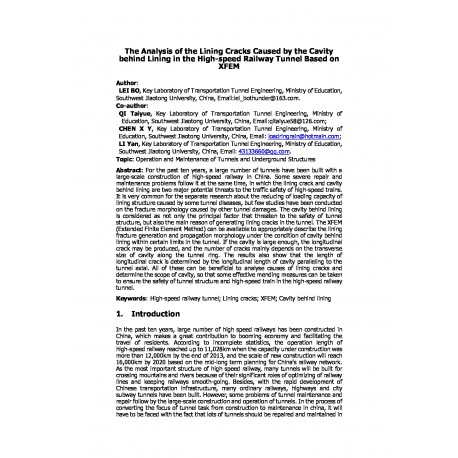Cart
0
0
No document
0,00 €
Total
Document successfully added to your shopping cart
Quantity
Total
There are 0 items in your cart.
There is 1 item in your cart.
Total documents
Total shipping
To be determined
Total
Search & filter
Search for a publication
Search & filter

The Analysis of the Lining Cracks Caused by the Cavity behind Lining in the High-speed Railway Tunnel Based on XFEM
wtc2015_full_leibo-1
T. Qi / Y. Li / B. Lei / X. Y. Chen
For the past ten years, a large number of tunnels have been built with a large-scale construction of high-speed railway in China. Some severe repair and maintenance problems follow it at the same time, in which the lining crack and cavity behind lining are two major potential threats to the traffic safety of high-speed trains. It is very common for the separate research about the reducing of loading capacity of lining structure caused by some tunnel diseases, but few studies have been conducted on the fracture morphology caused by other tunnel damages. The cavity behind lining is considered as not only the principal factor that threaten to the safety of tunnel structure, but also the main reason of generating lining cracks in the tunnel. The XFEM (Extended Finite Element Method) can be available to appropriately describe the lining fracture generation and propagation morphology under the condition of cavity behind lining within certain limits in the tunnel. If the cavity is large enough, the longitudinal crack may be produced, and the number of cracks mainly depends on the transverse size of cavity along the tunnel ring. The results also show that the length of longitudinal crack is determined by the longitudinal length of cavity paralleling to the tunnel axial. All of these can be beneficial to analyse causes of lining cracks and determine the scope of cavity, so that some effective mending measures can be taken to ensure the safety of tunnel structure and high-speed train in the high-speed railway Tunnel.



